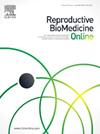在生育诊所设置重复测试抗勒氏杆菌激素浓度的瞬时变化
IF 3.7
2区 医学
Q1 OBSTETRICS & GYNECOLOGY
引用次数: 0
摘要
研究问题:患者的抗本文章由计算机程序翻译,如有差异,请以英文原文为准。
Transient variation in anti-Müllerian hormone concentrations with repeat testing in a fertility clinic setting
Research question
Is it possible for a patient to have low anti-Müllerian hormone (AMH) readings that recover to normal concentrations over the space of months or 1–2 years?
Design
This was a retrospective analysis of a fertility clinic patient database. Patients with repeat blood samples were examined to determine the degree of change in AMH concentrations over time. The main analysis consisted of 1871 patients.
Results
In 42% of patients with low AMH (<1.5 pmol/l) concentrations at the time of their first blood test, values had risen above this threshold at the time of the second blood test. In blood tests taken less than 6 months apart, AMH concentrations were equally likely to increase or decrease over time. Over longer time frames, AMH concentrations were more likely to show decreases, but this effect was strongest in women over 30 years old and minimal in women under 30. Patients with values in the interquartile range were likely to show a fluctuation of less than 5 pmol/l in AMH in tests taken less than 2 years apart. However, this also shows that larger changes can be expected in a sizeable minority of patients.
Conclusions
Serum AMH in younger patients tends to fluctuate without a substantial decline over time. In older patients, values in samples taken within 6–12 months tend to fluctuate in either direction, but declines are more likely over longer time frames. This study demonstrates that a small proportion of patients will have transiently depressed AMH concentrations, but it is possible for concentrations to recover in some cases.
求助全文
通过发布文献求助,成功后即可免费获取论文全文。
去求助
来源期刊

Reproductive biomedicine online
医学-妇产科学
CiteScore
7.20
自引率
7.50%
发文量
391
审稿时长
50 days
期刊介绍:
Reproductive BioMedicine Online covers the formation, growth and differentiation of the human embryo. It is intended to bring to public attention new research on biological and clinical research on human reproduction and the human embryo including relevant studies on animals. It is published by a group of scientists and clinicians working in these fields of study. Its audience comprises researchers, clinicians, practitioners, academics and patients.
Context:
The period of human embryonic growth covered is between the formation of the primordial germ cells in the fetus until mid-pregnancy. High quality research on lower animals is included if it helps to clarify the human situation. Studies progressing to birth and later are published if they have a direct bearing on events in the earlier stages of pregnancy.
 求助内容:
求助内容: 应助结果提醒方式:
应助结果提醒方式:


